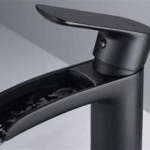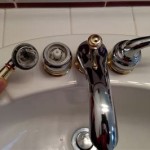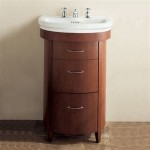How to Eliminate Musty Odors in Your Bathroom
A musty smell in a bathroom is a common problem that can be caused by a variety of factors, primarily related to moisture buildup and inadequate ventilation. Addressing this issue requires a systematic approach involving identifying the source of the odor, thoroughly cleaning affected areas, improving ventilation, and implementing preventative measures. A musty bathroom is unpleasant and can also signal underlying problems that could lead to mold growth and structural damage. It's therefore critical to take proactive steps to eliminate the odor and prevent its recurrence.
Identifying the Source of the Musty Smell
The first step in eliminating a musty smell is to pinpoint its origin. This involves a detailed inspection of the entire bathroom, paying particular attention to areas prone to moisture accumulation. Common culprits include:
Shower and Tub Areas: Examine the grout, caulking, and surrounding surfaces for signs of mold or mildew. Leaky showerheads or faucets, even small drips, can contribute to persistent dampness. Check the shower curtain or door for mildew stains. Look beneath the shower mat, as moisture can get trapped there.
Toilet Area: Inspect the base of the toilet for leaks, as water can seep underneath and create a breeding ground for mold. Check the toilet tank for condensation, which can also lead to moisture buildup. Examine the area behind the toilet, as it's often difficult to reach and clean, leading to mold growth.
Sink and Vanity: Look under the sink for leaks in the plumbing. Check the caulking around the sink and the countertops for mold. Examine the inside of the vanity cabinet for moisture or water damage. A damp cloth or cleaning sponge left inside can also contribute to mustiness.
Flooring: Check for water stains or discoloration on the floor, especially around the toilet, shower, and sink. If you have carpet in your bathroom (which is generally not recommended), it can be a significant source of musty odors. Look for signs of water damage or mold beneath the carpet.
Walls and Ceiling: Inspect the walls and ceiling for water stains, peeling paint, or discoloration, particularly near the shower or tub. These signs may indicate a leak in the plumbing or inadequate ventilation. Check corners and areas where walls meet the ceiling, as these are common spots for mold growth.
Ventilation System: Ensure that the bathroom exhaust fan is working properly. Check for dust or debris buildup that may be hindering its performance. If you don't have an exhaust fan, consider installing one to improve ventilation.
Once the source of the smell has been identified, you can proceed with targeted cleaning and remediation.
Thorough Cleaning and Remediation
After identifying the source of the musty odor, a comprehensive cleaning and remediation process is essential to eliminate the mold, mildew, and bacteria responsible for the smell. This involves using appropriate cleaning solutions and techniques to effectively disinfect and remove the contaminants.
Cleaning Solutions: Several effective cleaning solutions can be used to combat mold and mildew. One common option is a solution of bleach and water (1 part bleach to 10 parts water). However, bleach should be used with caution, as it can damage some surfaces and release harmful fumes. Always wear gloves and eye protection when using bleach, and ensure adequate ventilation. Another option is to use a commercial mold and mildew remover, following the manufacturer's instructions carefully. Vinegar is a natural alternative that is effective against many types of mold. You can use undiluted white vinegar or mix it with water. Baking soda is another natural cleaner that can help absorb odors and inhibit mold growth. Hydrogen peroxide is also effective in killing mold and can be used on various surfaces. Borax is a natural mineral that can inhibit mold growth and is less harsh than bleach.
Cleaning Techniques: For grout and caulking, use a stiff-bristled brush or an old toothbrush to scrub away mold and mildew. Apply the cleaning solution and let it sit for a few minutes before scrubbing. Rinse thoroughly with water. For larger areas, use a sponge or cloth to apply the cleaning solution, scrubbing gently to remove the mold. For porous surfaces like drywall, it may be necessary to cut out and replace the affected area if the mold has penetrated deeply. When dealing with fabrics like shower curtains or bath mats, wash them in hot water with detergent and bleach (if appropriate). If the fabric is heavily mildewed, it may be necessary to replace it.
Addressing Leaks: If the musty smell is caused by a leak, it's essential to repair the leak immediately. Replace leaky faucets, showerheads, or toilet components. Re-caulk around the shower, tub, sink, and toilet to prevent water from seeping into cracks and crevices. Check plumbing connections for loose fittings and tighten them as needed. If the leak is significant or persistent, it may be necessary to call a plumber for professional assistance.
Drying the Area: After cleaning, it's crucial to thoroughly dry the affected area to prevent mold from returning. Use a clean cloth or towel to wipe away excess moisture. Place a fan in the bathroom to circulate air and speed up the drying process. If the area is particularly damp, consider using a dehumidifier to remove excess moisture from the air. Open windows and doors (if weather permits) to promote ventilation and further dry the area.
By diligently cleaning and remediating the affected areas, you can effectively eliminate the source of the musty odor and create a healthier bathroom environment.
Improving Ventilation and Preventative Measures
After eliminating the existing musty smell, it is crucial to implement measures to prevent its recurrence. This involves improving ventilation to reduce moisture buildup and adopting preventative cleaning habits.
Enhancing Ventilation: Proper ventilation is critical for preventing moisture buildup and mold growth. Ensure the bathroom exhaust fan is working correctly and is used every time you shower or bathe. Run the fan for at least 15-20 minutes after showering to remove excess moisture. If the exhaust fan is old or inefficient, consider replacing it with a newer, more powerful model. If the bathroom doesn't have an exhaust fan, installing one is highly recommended. In addition to using the exhaust fan, open windows and doors (if weather permits) to allow fresh air to circulate and remove moisture. Leaving the bathroom door slightly ajar after showering can also help improve air circulation.
Regular Cleaning and Maintenance: Establish a regular cleaning routine to prevent mold and mildew from accumulating. Clean the shower and tub regularly with a mold and mildew remover. Wipe down surfaces after showering or bathing to remove excess moisture. Regularly clean grout and caulking with a bleach solution or a commercial grout cleaner. Wash shower curtains and bath mats frequently. Keep the bathroom floor clean and dry, especially around the toilet, shower, and sink. Inspect plumbing fixtures regularly for leaks and repair them promptly. Empty trash cans frequently to prevent odors from developing.
Controlling Humidity: High humidity levels can contribute to mold growth. Use a dehumidifier in the bathroom if necessary to reduce humidity. Consider using moisture-absorbing products, such as DampRid, to help control humidity. Avoid placing humidifiers in the bathroom, as they can exacerbate the problem.
Choosing Mold-Resistant Materials: When renovating or remodeling the bathroom, choose mold-resistant materials, such as mold-resistant drywall, paint, and flooring. These materials are designed to inhibit mold growth and can help prevent future problems.
Proper Storage: Store toiletries and cleaning supplies in airtight containers to prevent moisture from seeping into them. Avoid storing damp towels or washcloths in the bathroom, as they can contribute to moisture buildup. Ensure that all surfaces are dry before storing items in cabinets or drawers.
By implementing these preventative measures, you can create a bathroom environment that is less conducive to mold growth and maintain a fresh, odor-free space. Consistent effort in these areas will significantly reduce the chances of encountering musty smells in the future. Taking a proactive stance against moisture and maintaining cleanliness are key to a healthy and pleasant bathroom environment.

How To Get Rid Of Musty Smells Crafty Little Gnome

7 Indispensable Bathroom Smell Remover S In Housekeeping

5 Ways To Get Rid Of That Mildew Odor In Your Bathroom For Good

Bathroom Smells Musty Causes And Solutions

What To Do When The Bathroom Sink Smells Like Mildew Mold Smell

How To Get Rid Of The Musty Smell Kiwi Services

7 Indispensable Bathroom Smell Remover S In Housekeeping

Help My Bathroom Smells Musty What Should I Do Phyxter Home Services

Musty Smells In The Bathroom Clever Ideas For Odor Removal

Moldy Smelling Water From Bathroom Faucet Hometalk
Related Posts







